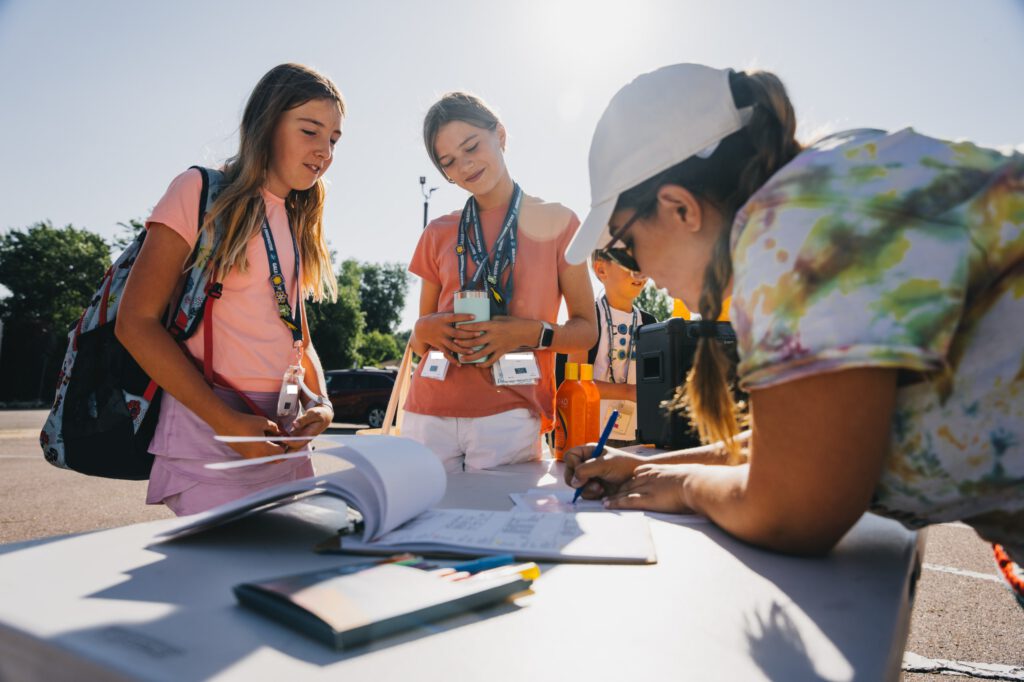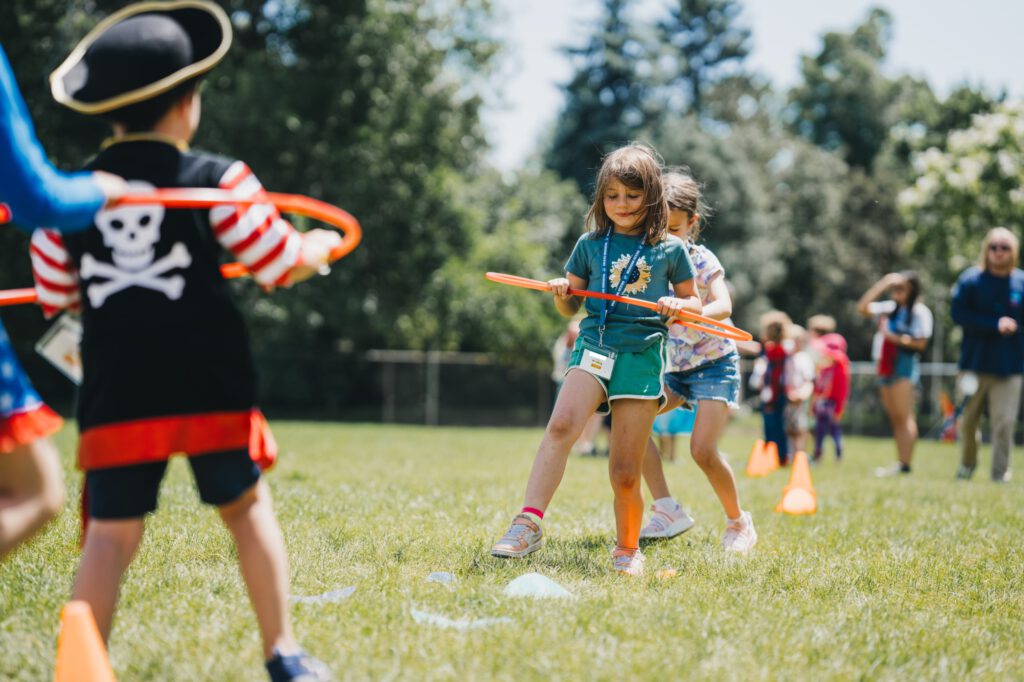Everywhere people are pausing for a moment during their busy, chaotic days—in classrooms, boardrooms, cars, and supermarkets—seeking to balance mind and body through focused self-awareness. By concentrating on breathing, practitioners are clearing their minds of past regrets and future worries and apprehensions to focus on the present.
Mindfulness has found its way onto Capitol Hill, into hospitals, professional sports, and the military, helping many to combat stress and increase focus. Mindfulness activities are catching on for kids, too, finding applications in schools, on athletic fields, and even at home; parents are incorporating mindfulness activities for their elementary students and finding them to be not only calming but helpful with improving concentration and facilitating collaboration.
The Origins of Mindfulness
Though mindfulness has a mainstream following in the U.S., it has taken more than 50 years to develop, according to psychologist Daniel Goleman. With roots in ancient Eastern religions, including Hinduism, Taoism, and Buddhism, mindfulness, like yoga, came to the Western world within the past half-century. Dr. Jon Kabat-Zinn brought mindfulness to the treatment of chronically ill patients in 1979 after studying with a Vietnamese monk. Since then, this form of meditation has boosted productivity in workplaces like Apple and Google, won Super Bowls, and gotten Republicans and Democrats to cross the aisle for mindfulness training. Its popularity has been extended by retreats and classes, books, videos, and smartphone apps. Studies have shown that the self-awareness that comes with mindfulness can have a healing effect that reduces anxiety and depression, promotes heart health, and eases stress.
Mindfulness Benefits for Kids
The physical and mental health benefits of practicing mindfulness have been well-researched with adults. Preliminary research suggests that it positively impacts the minds and bodies of kids as well. These are a few of the benefits:
Stress Reduction
Life can be stressful and fast-paced, and stress hormones can negatively impact our minds and bodies. The American Academy of Pediatrics recommends using mindfulness meditation to keep things in balance. The AAP suggests a few minutes per day for preschoolers, 3 – 10 minutes for elementary-aged kids, and 5 – 45 minutes per day for teens and adults.
Greater Attention
Studies of kids with Attention-Deficit and Attention-Deficit-Hyperactivity Disorders suggest that mindfulness meditation is valuable as a complementary and alternative medical treatment, especially when parents participate in the training. This is particularly intriguing to many as a way to decrease the use of prescription drugs for kids with ADD.
Improved Behavior
Since mindfulness training has been found to be effective for diffusing negative behaviors, its usefulness as a preventive technique has also been examined. Practicing mindfulness while their brains are developing can help kids with self-regulation, patience, and empathy, all qualities that positively impact their interactions with others. Through games and activities, kids can learn to regulate their emotions and respond appropriately. At home, mindfulness may be beneficial for settling sibling squabbles.
Better Memory
Mindfulness has been credited with reducing stress and anxiety during high-stakes testing, thus improving working memory and concentration. Clearing the mind improves focus on the present, preparing kids to accept challenges.
Each of these aspects is beneficial in education, not only for advancing academic achievement but for improving school climate and culture, and for this reason, many schools are including mindfulness activities and even specialized curriculum into their day.
Mindfulness at Home
Incorporating mindfulness as kids grow and develop can not only create a more peaceful home environment but also equips kids to deal with life’s inevitable stresses. Thus, practicing mindfulness with our kids is a gift that keeps on giving. Though the concept of mindfulness seems simple, implementing it in our lives requires some guidance or training. Our minds wander quite naturally, and we must train ourselves to focus. Here are some ways to get started with your kids:
Model mindfulness
As always, the best way to introduce something new to our kids is to demonstrate that we embrace it ourselves. Practicing mindfulness as a family will benefit everyone, individually and as a whole.
Mindful breathing
The breath is a great place to begin a mindfulness practice. Start by breathing in through the nose to a count of three, pausing, then breathing out through the mouth to another count of three. Counting it out for kids in a quiet voice will help them to find the rhythm. The bedtime routine is a great time to practice this calming exercise. Remind kids they can use this tool during stressful times at school or when interacting with siblings or friends.
Ready to level up? Find additional breathing exercises for kids 8 to 12 can be found in Mallika Chopra’s book, Just Breathe.
Mindful observation
Sustained focus on an object or landscape can give us time to really see and appreciate the wonders in our world. Stopping for a few quiet moments to really observe a leaf or a cloud in a relaxed manner can be calming and restorative. It’s the epitome of stopping to smell the roses.
Mindful eating
During a meal or snack, help kids practice eating mindfully. Start with mindful breathing, as they hold and examine the food: seeing, feeling, and smelling. Guide your child in noticing the way their meal smells and how it feels in their mouth. Remind them to chew slowly before swallowing, then take a few more breath cycles before the next bite.
Mindful walking
After a few mindful breaths with kids, go for a walk. Guide them in focusing on feeling the ground beneath their feet and the breeze against their cheeks. Encourage them to observe the sights, sounds, and smells of their surroundings, making the walk a multisensory experience. Help them to focus on how their body feels as their legs reach out: energized, lengthened, connected to the Earth.
Complementary activities
By including activities and events that complement and enhance kids’ mindfulness practices, parents can give them opportunities to capitalize on their increased self-awareness, their capacity to concentrate, and their ability to participate in collaborative projects with others. With increased self-awareness and the ability to challenge themselves, kids can accomplish amazing things.
Camp Galileo encourages kids to follow their interests and share their ideas without fear or hesitation. As they interact and collaborate with their team, campers acquire a complementary mindset that allows them to participate and create fearlessly.
Skills for a Lifetime
The practice of mindfulness is everywhere. Kids growing up with mindfulness tools methods for quieting their minds when the going gets tough. This has positive implications for dealing with the stresses in life. Learning to concentrate on the present helps kids to give their attention to the task in front of them. In turn, this positively impacts them in school, family life, and someday, in their careers.
Kids who have better self-regulation can focus their concentration on communicating effectively and work to collaborate with others. As a growing body of evidence has demonstrated, devoting time to mindfulness has long-term benefits for the mind and body.



